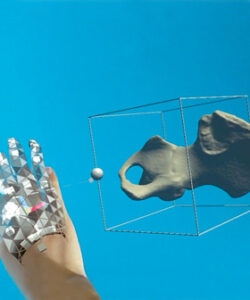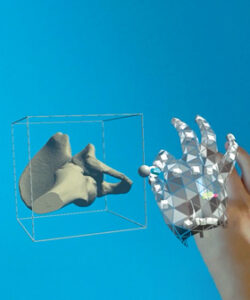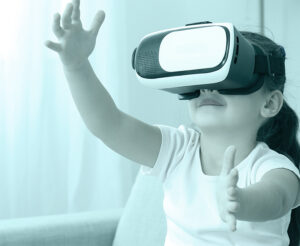Healing with a dose of technology
The Digital Lab at BC Children’s Hospital began as a simple but promising idea: to use digital innovation and technology to improve the health of kids. Since it launched seven years ago, it’s been bringing patient-centred care to entirely new heights. The lab has engaged kids and families in over 100 countries, supports 40+ surgeries annually and engages 25,000+ patients and users each month.
Read on as we peel back the curtain on a few projects in the works—thanks to our community of donors.
3D TECHNOLOGIES
Through the support of Kirmac Cares for Kids, surgeons at BC Children’s are using three-dimensional replicas of a child’s heart to practice highly complex procedures—before they pick up a scalpel.
They’re not stopping there. In recent years, the Digital Lab has been bringing this technology to other areas of care—like complex bone surgeries. Together with the Department of Orthopedics, they’re creating precise digital simulations of procedures using 3D virtualization technologies, which can lead to shorter operative times, smaller incisions and quicker recoveries. They’re also designing and printing highly personalized surgical devices that are entirely unique to a child’s anatomy to improve precision and accuracy during procedures.
As for what’s next, experts are in the early stages of prototyping with printing biomaterials. That may one day allow them to 3D print actual tissues or bone that can be used to support a child undergoing specialized treatment.


 VIRTUAL AND AUGMENTED REALITY
VIRTUAL AND AUGMENTED REALITY
Whether it’s a routine clinic visit or a complex medical procedure, the hospital can be stressful—especially for kids.
Take MRIs, for example. Young patients are often intimidated by the unfamiliar room, loud noises and confined space. In a new clinical trial, researchers are exploring how virtual reality can be used for exposure therapy. Through it, a child and their family are immersed in a virtual world that mimics the exact hospital experience, helping them feel more confident.
These experiences are created using incredibly high-quality images or videos of the real world, such as a hospital room, operating room or inside the MRI machine. To help orientate patients, they also use actual sounds of machines and even the voices of clinicians.
The best part? The Digital Lab has integrated this with a game-based mobile app that lets kids and families walk through a digital version of the hospital using a virtual avatar—before they enter the virtual reality experience.
DIGITAL MEDIA
Technology is also allowing kids and families to understand and manage their conditions in novel ways. Case in point: the Heart Centre Online Patient Education Hub.
Launching this November, the resource gives families living with pediatric heart disease, like congenital heart defects and arrhythmias, access to the expertise and knowledge of the Heart Centre team right on their phone or computer. They can learn about the complexities of heart disease in engaging ways, such as interactive 3D models and custom animations—empowering them to understand the condition like never before.
